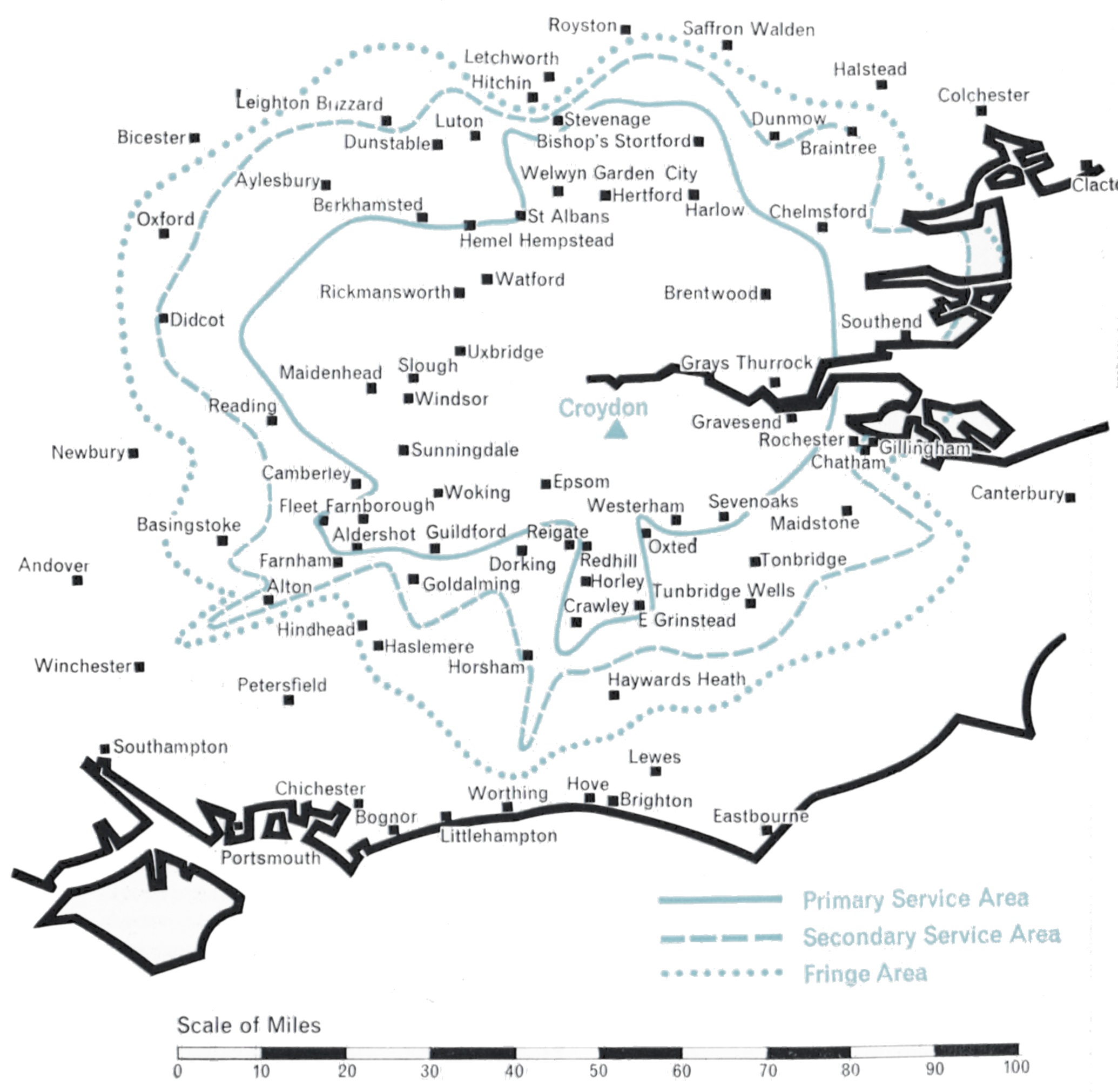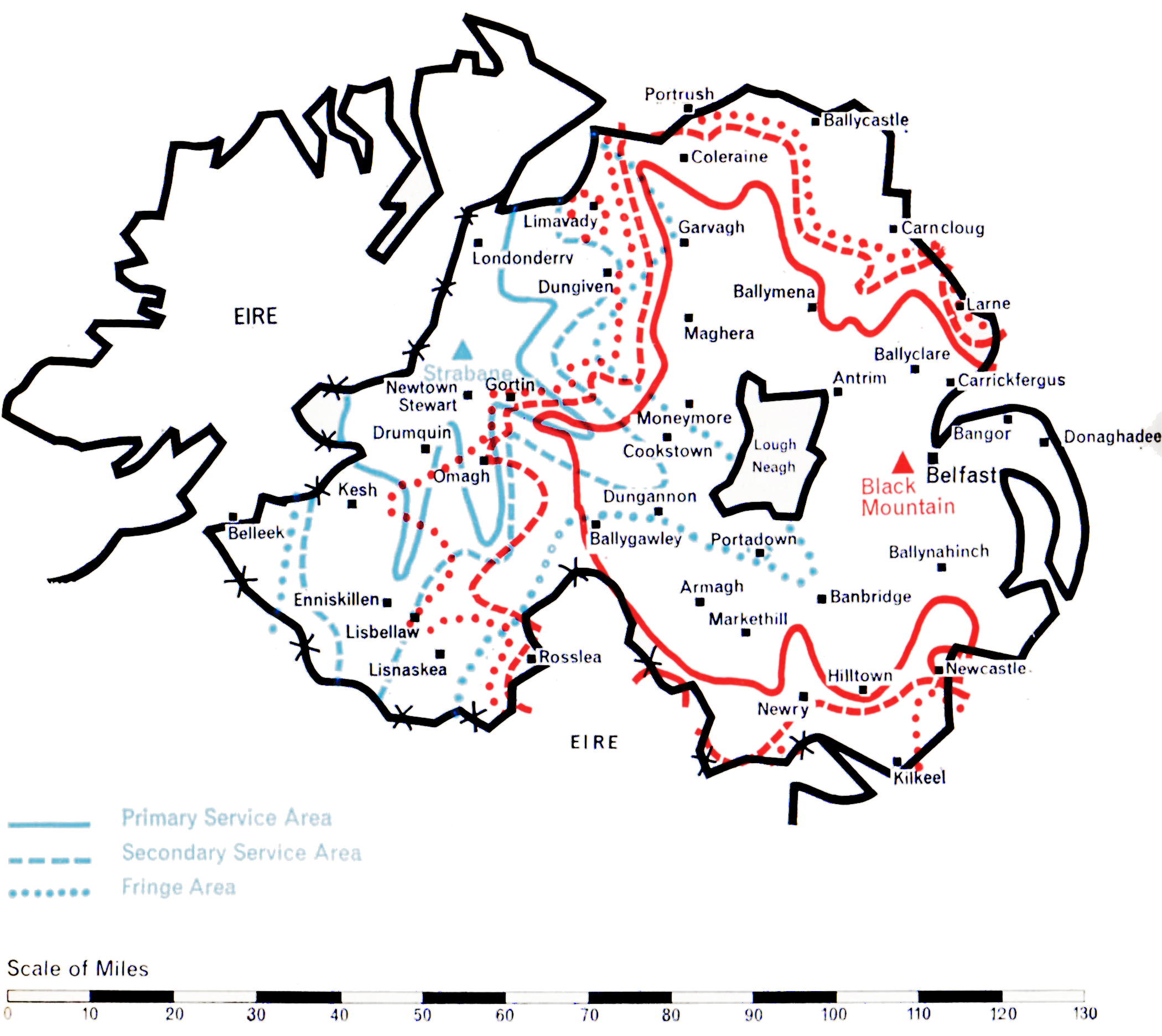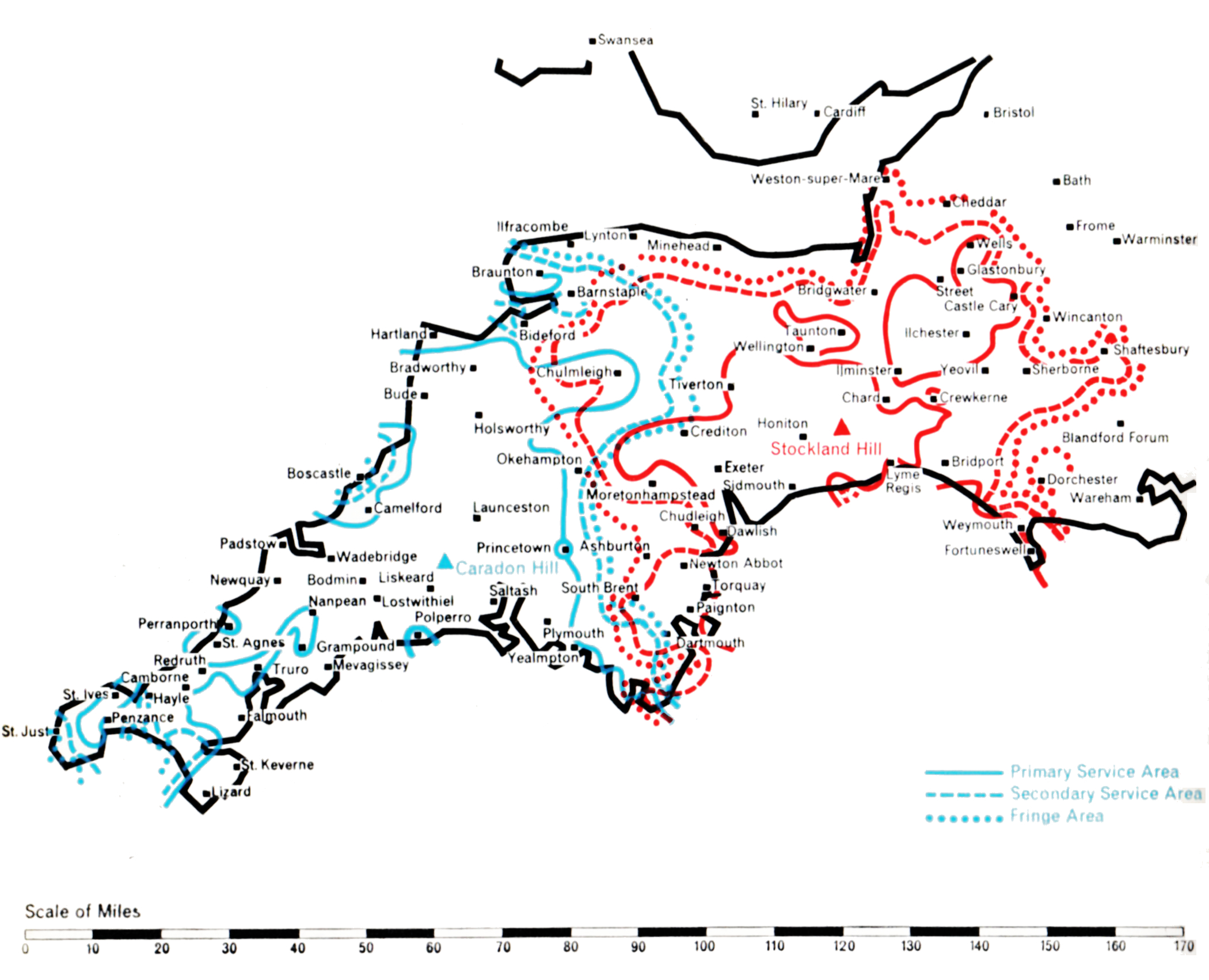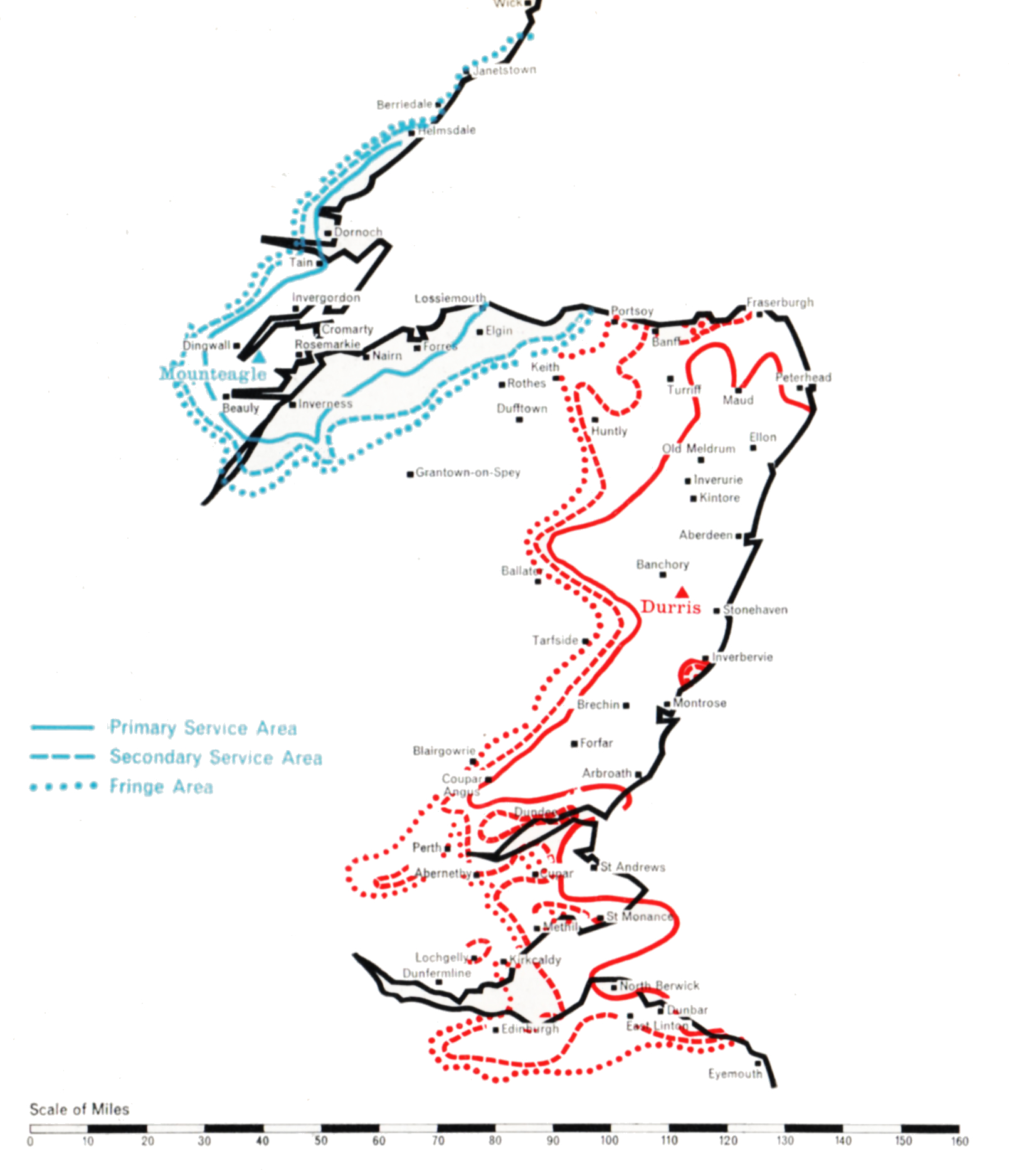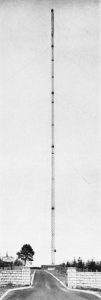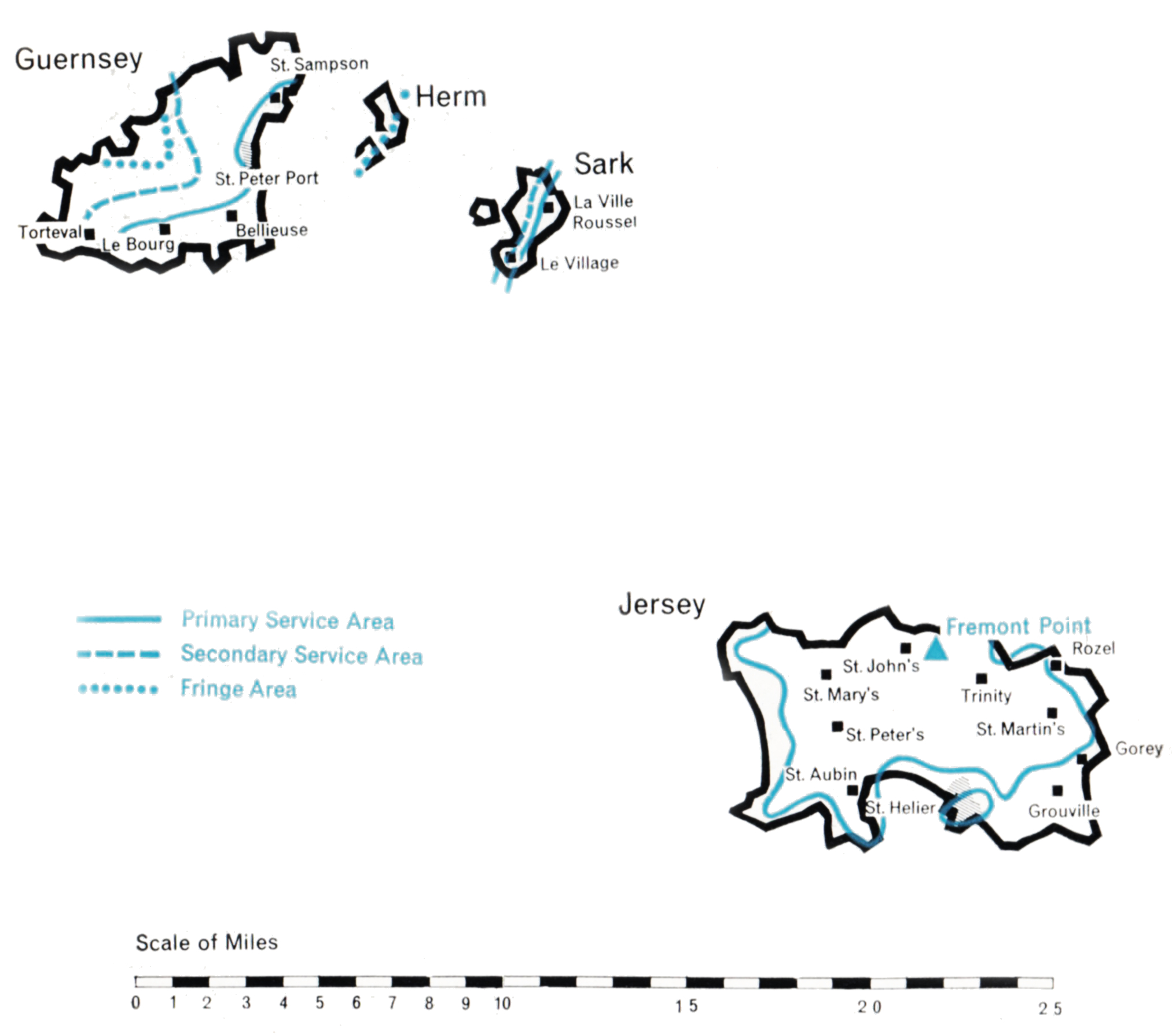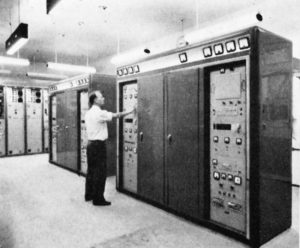- Population within predicted contours: Primary 10.52 mn, Secondary 1.72 mn, Fringe 0.67 mn. Total 12.91 mn.
- Channel: Band III Channel 9 (vertically polarised)
- Vision Carrier Frequency: Nominal 1974.75 Mc/s. Actual 194.75675 Mc/s
- Sound Carrier Frequency: Nominal 191.25 Mc/s. Actual 191.266 Mc/s
- Effective Radiated Power: Vision 400 kw. Sound 100 kw.
- Power of Transmitters: Vision (peak white) 10 kW. Sound (carrier) 2½ kW
- Heights above sea level: Site 375 ft. Mean aerial 825 ft.
- Location: 0° 5′ 15″ W, 51° 24′ 35″ N.
Croydon (Channel 9)
Companies: Associated Rediffusion (weekdays), Associated TeleVision (weekends)
For the technical planner concerned with achieving national television coverage as economically as possible, London is the obvious point of departure. Within a radius of some forty miles from its heart live some twelve million people, almost one quarter of the total population of the United Kingdom. Topographically the London area presents no serious problem of propagation. It is relatively flat except for the North Downs some twenty-five miles to the south and the ridge of the Chiltern Hills some thirty miles to the west and north. Indeed, the difficulty is to find high ground close enough to the centre of London on which to construct a station. The choice rests between the 400 ft. ridges of Muswell Hill (Alexandra Palace) in North London and Sydenham (Crystal Palace) in South-East London.
Alexandra Palace was the BBC’s choice for their original Band I London station in 1935. Twenty years later, however, they were to move to a new station at Crystal Palace. In the interests of good planning the ITA decided to locate its first Band III station near this site, just a mile away on West Norwood Hill.
A suitable open space was found here for the construction of a small compact station which could be brought into operation with the least delay. The single 10 kW transmitter, the first Band III set constructed in this country, was a laboratory prototype and the aerial an experimental 8-stack omnidirectional vertically polarised array supported on a 200 ft. tower of virtually “stock” design. From this station on 22nd September 1955 the first programmes of Independent Television were transmitted. The effective radiated power was 60 kW (peak white vision), 15 kW (carrier sound). The potential population coverage was about 11 million people. After some months a second fully-engineered production 10 kW transmitter was installed as a standby. A little later, further equipment was installed to enable both sets of transmitters to be operated in parallel in order to double the station’s power.
It was realised that in due course the Croydon station must be given a higher tower and a new aerial system with directional characteristics tailored to give the optimum performance. Meanwhile, however, engineering effort was devoted to expanding the ITA network of stations to meet the fast-growing public demand for Independent Television programmes in other parts of the country. The completion of the BBC’s high tower at Crystal Palace allayed any fears that the mutual reflection of signals radiated from the two towers just a mile apart might be harmful to reception. Thus in February 1959 the Authority obtained Government approval to erect a higher tower and directional aerial at Croydon.
By the end of 1962 Croydon was transmitting from its slim new 500 ft. tower and radiating an effective power of about 400 kW directed to the north-west, with 5o to 100 kW e.r.p. in other directions, depending on the extent to which account had to be taken of the conflicting requirements of topography and co-channel interference with other ITA stations or with the television services of other countries. With its improved performance Croydon is bringing the programmes of Independent Television to a population of nearly 13 million in the London area, including some half a million viewers who have not before received any satisfactory ITV service.

